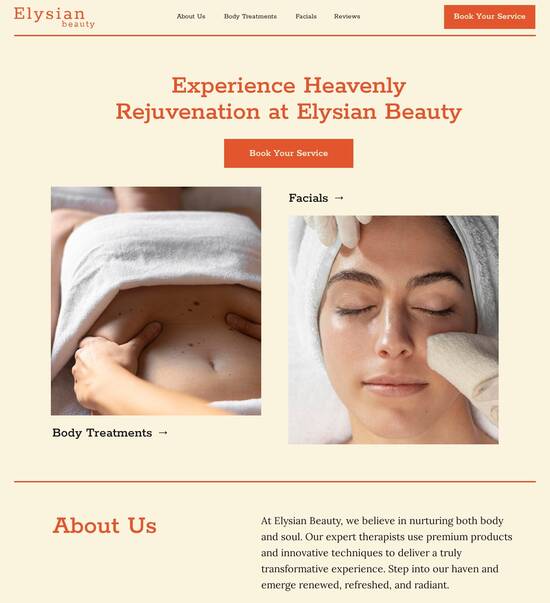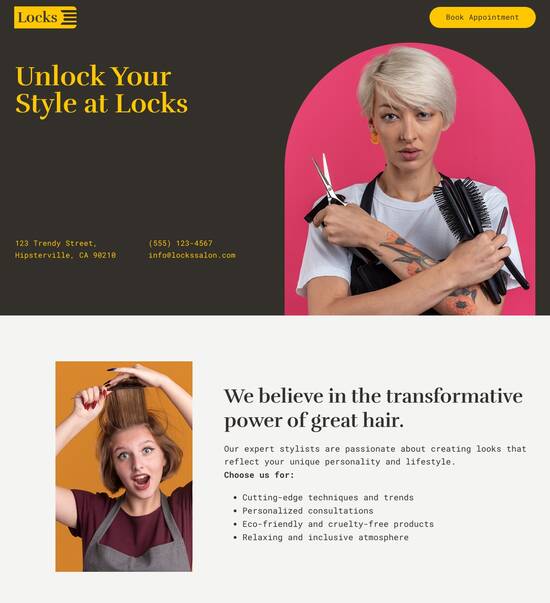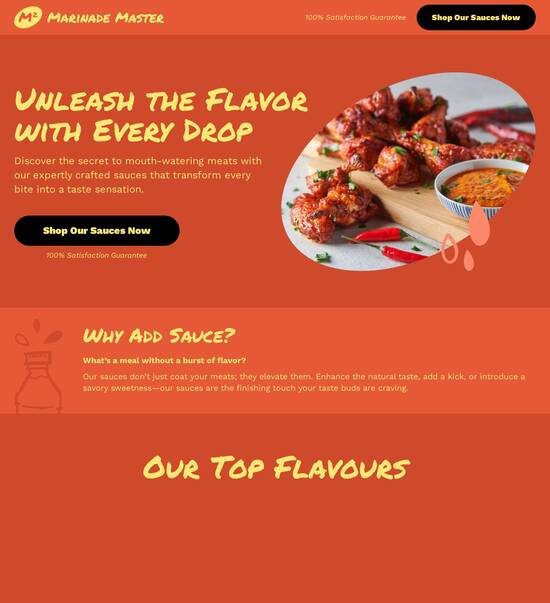
React.js optimized checkout page template
Explore Similar TemplatesAbout template
Supercharge your checkout page with React.js for outstanding performance! Learn more today.
Recommended templates

Easy to build without coding
With the intuitive drag-and-drop builder, anyone on your team can create high-converting pages without any knowledge of code or design. Make enhancements to your landing page with custom widgets using Javascript, HTML/CSS, or third-party scripts.

Multiple layouts for any industry and goal
Select from 500+ landing page layouts built to boost conversions across industry-specific scenarios. Customize them by adjusting fonts, adding images, and generating on-brand content with the AI assistant. Quickly scale with Instablocks® and Global Blocks that you can save, reuse, and update globally.

Loads fast and looks polished on any device
Every template is responsive, which means they present professionally on any device and load blazingly fast with our Thor Render Engine. You can also power them up with Google AMP technology to deliver an unparalleled mobile experience and drive higher conversions.

Robust analytics & experimentation
Get real-time updates and reporting across all your devices, showing the number of visitors, conversions, cost-per-visitor, and cost-per-lead. Launch AI-powered experiments, run A/B tests, and use heatmaps to analyze user behavior, then optimize your landing page to maximize conversions.







Easy to build without coding
With the intuitive drag-and-drop builder, anyone on your team can create high-converting pages without any knowledge of code or design. Make enhancements to your landing page with custom widgets using Javascript, HTML/CSS, or third-party scripts.
Multiple layouts for any industry and goal
Select from 500+ landing page layouts built to boost conversions across industry-specific scenarios. Customize them by adjusting fonts, adding images, and generating on-brand content with the AI assistant. Quickly scale with Instablocks® and Global Blocks that you can save, reuse, and update globally.
Loads fast and looks polished on any device
Every template is responsive, which means they present professionally on any device and load blazingly fast with our Thor Render Engine.
Robust analytics & experimentation
Get real-time updates and reporting across all your devices, showing the number of visitors, conversions, cost-per-visitor, and cost-per-lead. Launch AI-powered experiments, run A/B tests, and use heatmaps to analyze user behavior, then optimize your landing page to maximize conversions.
All the features you need to build react checkout page
Explore more featuresLearn how to build checkout list template
Frequently asked questions about checkout page layout sample
Leading the way in building high-performing landing pages





Robingram: Your ultimate how-to guide
Creating a high-converting landing page is crucial for marketers looking to optimize their campaigns and maximize ROI. Instapage offers an all-in-one landing page and CRO platform that lets you create, test, and personalize your pages without needing extensive coding skills. In this guide, we'll walk through the steps to leverage Instapage's powerful features, ensuring your landing pages drive results.
Step 1: Choose a Template
Start by selecting one of the 100+ pre-designed templates that fit your campaign goals. Instapage provides high-converting options suitable for various verticals, including business services, tech, education, and financial services. Choosing a well-structured template can significantly reduce the time and effort needed to create your landing page.
- Identify your campaign objective: Determine if you aim to generate leads, sell a product, or promote a service.
- Select a relevant template: With options tailored for different industries, choose one that aligns with your audience.
- Customize elements: Modify headlines, images, and CTAs to match your brand and message.
Step 2: Optimize for Conversions
Once your template is set, it's time to optimize for conversions. Utilize Instapage's built-in experimentation tools to enhance user engagement. Here's how:
- Integrate A/B testing: Test different headlines, images, and layouts to find the combination that yields the highest conversion rate.
- Utilize heatmaps: Monitor user behavior to identify areas of interest and sections that may need adjustments.
- Analyze data: Use the analytics dashboard to assess performance metrics and make iterative improvements.
Step 3: Personalize User Experience
Now, personalize your landing page content. By tailoring the user experience to different audience segments, you can enhance user engagement and conversion rates. Consider these strategies:
- Dynamic text replacement: Automatically adjust content based on the audience's specific interests and search behavior.
- AdMaps integration: Align ad campaigns with unique landing pages, ensuring seamless transitions for users.
- Data tracking: Analyze audience-level data to optimize messaging and offers.
Following these steps will not only enhance your page effectiveness but also help in achieving greater campaign success. Instapage empowers you to be agile and focused, ensuring you can adapt your pages based on live feedback.
By employing the strategies discussed, you will be well on your way to creating high-converting landing pages that resonate with your target audience. Remember, continuous optimization is key.
Ready to transform your digital marketing strategy? Start using Instapage today to create landing pages that convert!
People also ask about checkout page react
ReactJS optimized checkout page template
Understanding the significance of an optimized checkout page in e-commerce
An optimized checkout page plays a crucial role in customer retention and driving conversion rates. A seamless checkout process can significantly affect a buyer's journey, determining whether they complete their purchase or abandon their cart. Research indicates that over 70% of online shoppers abandon their carts, often due to complicated or lengthy checkout processes. This statistic underscores the importance of investing in user experience to ensure a smooth and efficient checkout process.
The user experience during checkout is a key factor influencing sales. Optimization directly correlates with increased revenue as it reduces friction, making it easier for customers to finalize their purchases. A well-designed checkout template not only enhances conversion rates but also fosters user satisfaction, encouraging repeat business.
Essential features of a ReactJS-based checkout page template
Responsive design
Ensuring mobile-friendly interfaces is essential. Techniques for adaptive layouts, such as using CSS Grid and Flexbox, provide optimal viewing experiences across devices.
Fast rendering
Leveraging React's Virtual DOM leads to improved performance metrics. Practical examples can demonstrate time savings and improved load times.
State management
Utilizing tools like Redux or Context API helps maintain user input and preferences, ensuring smoother interactions.
Form validation
Implementing robust validation techniques is vital for ensuring seamless data entry and reducing errors.
User feedback mechanisms
Real-time notifications and confirmations can provide reassurance to users, significantly enhancing their experience.
Key technologies empowering the ReactJS checkout template
Several technologies work hand in hand with a ReactJS checkout template to enhance functionality and user experience. First, integrating with popular payment gateways such as Stripe and PayPal simplifies financial transactions, providing users with familiar options and greater confidence to proceed with their purchases.
Additionally, leveraging React Router for enhanced navigation allows users to move seamlessly through different components of the checkout process without losing their progress. Libraries such as Axios are essential for making API requests, ensuring that data retrieval is both efficient and straightforward. Finally, deploying these templates using cloud platforms like AWS or Firebase can greatly improve scalability and speed, providing a solid infrastructure for handling traffic spikes.
Underscoring the benefits of using a ReactJS template
Adopting a ReactJS template streamlines development processes through the use of reusable components, drastically reducing the time needed to build a robust checkout page. This modular approach allows developers to focus on specific aspects of the shopping experience, enhancing productivity and code maintainability.
For teams working remotely or in various locations, the collaborative advantages provided by a structured ReactJS template cannot be overstated. Clear component structures allow teams to work in parallel without causing integration issues down the line. Performance metrics also show that these templates can result in faster load times and enhanced user satisfaction.
Moreover, scalability becomes a crucial factor for growing e-commerce platforms. Templates that are designed with ReactJS allow for easier updates and feature additions, future-proofing your e-commerce strategies and adapting to market changes swiftly.
Crafting the template: step-by-step guide
Creating an efficient checkout page template requires careful planning and execution. Start by gathering requirements from relevant communities and feedback from users who have experienced previous checkout flows. Understanding common pain points can provide insights that influence design decisions.
Next, set up your React environment using Create React App, ensuring that all necessary dependencies are installed. Begin by building base components such as the Header, Footer, Product Summary, and Payment Section, establishing a coherent structure. Integration of state management tools, like Redux, allows you to track user inputs effectively and manage the flow of information throughout the checkout process.
Incorporate form validation techniques, employing libraries like Formik or Yup for smooth data entry. Provide real-time user feedback for actions such as successful submissions or errors, enhancing the user experience significantly. Testing and debugging can be done using tools like Jest and React Testing Library to ensure robustness.
Providing dynamic content to enhance user experience
Dynamic content can elevate the user experience during checkout. Implementing dynamic pricing models based on user behaviors, such as abandoned carts or previous purchases, can influence purchasing decisions positively. For instance, offering personalized discounts or upsell suggestions tailored to user activities can significantly increase conversion rates.
Furthermore, personalizing the checkout flow according to customer segments can create a feeling of exclusivity that resonates with shoppers. By analyzing user data and behavior patterns, e-commerce platforms can optimize checkout experiences to cater to specific demographics or preferences, effectively meeting their unique needs.
Several collectives have embraced these strategies to optimize their checkout flows. For example, retailers leveraging customer purchase history have successfully implemented tailored experiences that increase average order values and foster customer loyalty.
Enabling collaboration via Q&A features
Incorporating a Q&A section within the checkout page can foster engagement and build trust. By allowing users to pose questions about products or processes directly on the checkout page, retailers can address concerns immediately, reducing abandonment rates.
To facilitate this, implement methods that automatically collect user questions during the checkout process, compiling them into a knowledge base that addresses common user concerns. Utilizing tools like discourse or custom platforms can streamline this aspect, ensuring users find the help they need quickly.
Managing this knowledge base requires best practices to ensure information remains relevant and accurate. Regular updates based on user inquiries can enhance the checkout experience for future customers, providing a resource that supports conversion.
Post-purchase strategy: access and follow-up
Following up with customers after checkout is crucial for building strong relationships and ensuring satisfaction. Implement strategies that allow for customer feedback, such as follow-up emails or surveys. This information can guide future enhancements to the checkout process and product offering.
Creating templates for customer feedback forms and suggestion boxes can streamline this process, ensuring that user input is collected consistently. Encouraging customers to share their experiences not only enhances loyalty but also contributes to a continuous improvement cycle.
Finally, ensuring ongoing content updates based on customer interactions and preferences can keep your checkout page relevant, maximizing user engagement and retention.
Case studies: success stories from top brands
Exploring case studies allows us to understand the practical applications of a ReactJS optimized checkout page template. Several prominent companies have successfully leveraged ReactJS for their checkout processes, leading to remarkable improvements in user metrics. For example, a leading fashion retailer integrated a tailored ReactJS checkout system, resulting in a staggering 25% increase in conversion rates post-launch.
These companies analyze user metrics before and after implementing optimized templates, providing insights into customer behavior shifts. The lessons learned from these endeavors have led to emerging trends that focus on user-centric design and flexible checkout options, aligning with modern consumer expectations.
Future trends in checkout page optimization
As e-commerce continues to evolve, staying ahead of trends in checkout page optimization is essential. The evolution of technologies, including AI and machine learning, poised to shape the way customers interact with checkout pages, enhances personalization and user experience rates.
Predictions suggest that AI-driven systems will enable more personalized recommendations and more efficient data processing, ultimately providing an enhanced shopping experience. Additionally, community-driven feedback will increasingly influence iterative design processes, emphasizing the importance of user input.
Ready to skyrocket conversions?
Supercharge your ad campaigns with high-performing landing pages
Get started














